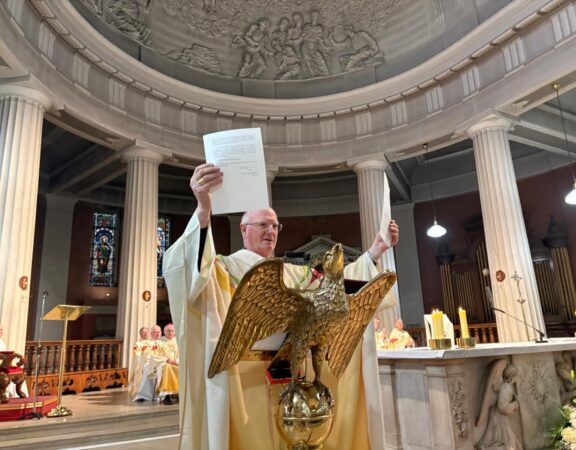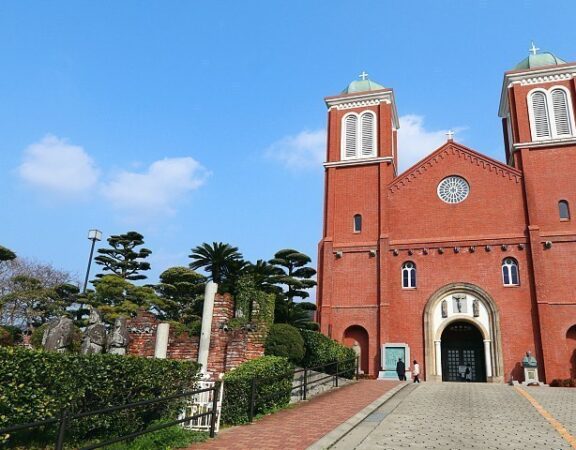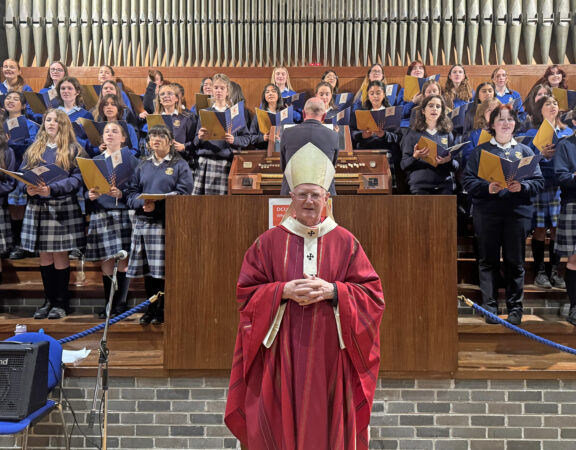Homily Notes of
Most Rev. Diarmuid Martin
Archbishop of Dublin and Primate of Ireland
———–
Our Lady of Consolation, Donnycarney, 19th April 2009
In today’s Gospel we see the strong personality of the apostle Thomas. The other disciples are overjoyed as Jesus appears to them, confirming what he had taught them. Thomas was not there and he was not taken by the same immediate enthusiasm as the others, but wanted to see for himself that it really was Jesus who had appeared to the group.
Thomas is one who must make up his own mind. His lack of faith is due to his obstinacy. There is a sense in which he easily falls into the perennial temptation of thinking that it is he, and he alone, who can determine who Jesus is and when he should be accepted, rather than opening himself without preconditions to the power of life that flows from Jesus.
You may have seen reports in the media that the numbers of those who attended religious services in Ireland over the Easter period this year was higher than in the recent past. Some would attribute this to the economic recession which has provoked a greater awareness of the fragility of an ethos of easy prosperity which had tempted many over the past years.
A deeper awareness of the shallowness of many aspects of modern living may indeed make people think once again about faith. But the problem of faith and lack of faith is a much deeper question. Faith is Jesus Christ is never easy. Faith in Jesus Christ is not just a matter of feeling or of the formulae of doctrine, but of an encounter with Jesus Christ as a real person, a real person who reveals to us in his life and mission that God is love and thus changes the way we live as individuals and as a community.
The first reading of today’s Mass spoke about the change that was brought about in the community of the early Church. The Apostles witnessed to the Resurrection with great power, and that power was influential in shaping the great sense of community which marked the early Christians.
Doubt about faith is not in the first place just doubt about one or other dogma or one or other aspect of the moral teaching of the Church. It is doubt about the very ability and utility of believing in Jesus Christ and doubt about the fact, to paraphrase the very end of today’s Gospel reading, that it is only through believing the name of Jesus that we may have life. Faith comes through encountering those “signs” of which John speaks which were worked by Jesus Christ and which are still valid today and which alone open out the possibility of having life in its fullness.
Thomas is normally known as the one who doubted, but there is also the sense in which he is the one who overcame his doubts and came to belief. And his expression of belief is one of the most profound to be found in the scriptures. He recognised who this Jesus truly was: “My Lord and My God”, he exclaims. On numerous occasions the apostles had recognised Jesus as their Lord, but Thomas is the one who most clearly recognises that this Jesus who had died and is risen is truly God.
What changes Thomas? Thomas changes yes when he sees Jesus. It would perhaps be more accurate to say that he believes when he sees the real Jesus and no longer a Jesus of his own making. Faith comes when Thomas allows Jesus to shape his life, rather than himself trying to shape his own idea of Jesus.
Thomas believes when he understands that Jesus is risen still bearing the signs of that self-giving love which had led him to the ignominious death on the Cross for our sake. It is in seeing the wounds of Jesus that Thomas fully understands how much Jesus loved him and how much Jesus loves us. Jesus had taken upon himself the wounds of humankind, and in rising he had healed those wounds and enabled humanity to cope with its own doubts and uncertainties, with its own troubled history.
The Church is the community of believers called to carry on that work of healing in our time and it must always be a healing and a reconciling community.
Today we are pleased to have with us a Delegation from the Hungarian City of Gyor to honour the bonds between that City and this Parish of Donnycarney. They are bonds fostered by an image of the Mother of God, Our Lady Comforter of the Afflicted, brought to Gyor centuries ago by an Irish Bishop fleeing, in times of difficulty and persecution. Despite the challenges that Hungary was facing at the same time, the Irish Bishop, reduced to poverty, was made welcome and found a true home in Gyor.
A copy of that same picture has hung here in this Church and in the previous “tin Church” since the late 1940’s, commissioned by the then Parish Priest, Canon McArdle, who had chosen Our Lady of Consolation as Patron for this Church, on his return from the Eucharistic Congress in Budapest in 1938. It was once again a time when heavy clouds hung over Europe before the Second World War. And when after the war it was finally possible to start work on a Church in this area, it was once again a time of trial for the Church and the people of Hungary, as the fear of the imposition of an atheistic regime threatened the nation.
Today is an occasion in which we reflect on the solidarity that has existed among the people of Europe over the centuries, despite political and religious differences, despite war, aggression and intolerance. It is an occasion for us to remember how many connections there are between Ireland and Hungary and indeed between Ireland and the rest of Europe. In the past these bonds may have been occasioned by factors such as poverty or persecution. Today we have the opportunity of strengthening those bonds in a Europe at peace but which still needs solidarity and sharing.
Ireland may be a small island on the geographic fringes of Europe but our ceremony today is another example of the bonds which the Irish have established in every corner of the continent and a reminder that Ireland belongs within Europe, that today there can be no true definition of Irish identity separate from Ireland’s European vocation.
Europe today needs a vision for its future. Rather than lamenting a lack of recognition of the Christian heritage of Europe in recent political documents and events, European Christians have a new opportunity to bring to a Europe in search of hope and vision a challenging way of living the Christian message.
The Christian community spread across the continent must be a focus on unity. Just as with the early Church, the Christian community which today lives and witnesses to the message of the resurrection can bring to Europe something of that spirit of sharing which marked the early Church.
The future of European integration will not in the first place be the result of a treaty or of new political structures. Europe needs to be nurtured by that spirit of “unity of heart and soul” of which the first reading spoke. Europe must become a Europe of peoples; a Europe of peoples which are different yet capable of living together in unity and solidarity. As Irish Christians we cannot and ought not flee from the challenges of shaping the Europe of the future. Christians make their contribution to a better Europe in a spirit of respect and dialogue. Hopefully there will not be attempts to reject the contribution of European Christians to the future of Europe, to limit the possibility of Christians to express their concerns as believers. As European Christians, together with people of different beliefs, we must work unceasingly towards overcoming of the divisions which egoism and narrow nationalism, greed and religious intolerance have caused and which threaten the individual nations of Europe and Europe itself.
As a Christian community in Europe we must feel ourselves called to foster growing contact and mutual understanding among the peoples of Europe. The Church itself must become more visibly a community which within its own boundaries witnesses that unity among peoples really means.
The image which we venerate was known as the “Weeping Madonna”, whose tears recorded difficult times for Europe. Today we look, in the spirit of the resurrection, and see that those tears can be turned into hope for Europe, through the power of Jesus who destroyed death and opened the path to new life for all.







